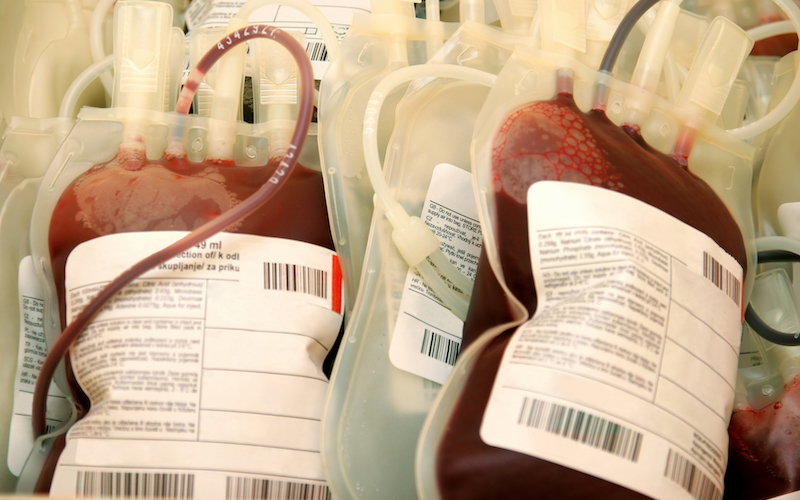
FDA releases guidance on using blood from recovered COVID-19 patients to treat new cases.
As drug companies investigate antiviral drugs to combat COVID-19, the U.S. Food and Drug Administration (FDA) looks to previous COVID-19 patients as a potential source for a more effective therapy.
Early reports from some experimental drug trials have shown marginal success in the fight against COVID-19. These drugs, however, may have significant side effects and require many months or even years to demonstrate their safety and efficacy. An alternative therapy found in the blood of recovered COVID-19 patients could eliminate side effects and would leverage the experience gained during similar recent outbreaks, including the SARS, H1N1 influenza, and MERS epidemics. A recently published FDA guidance provides investigators with regulatory and logistical guidelines for studying this alternative COVID-19 treatment.
Patients who recover from COVID-19 do so by developing antibodies that fight the infection. Once B cells produce antibodies, they embark on a seek-and-destroy mission that targets the contagion. The liquid portion of the blood, called the plasma, can be separated from red and white blood cells and contains a concentration of circulating antibodies. Plasma collected from patients who have recovered from an illness is called convalescent plasma and may be used to treat other patients with the same infection.
In its recent guidance, FDA describes the eligibility criteria that potential convalescent plasma donors must meet. For example, donors must meet general regulatory requirements as well as more specific regulatory requirements to donate whole blood or plasma. In addition, all donated plasma must be tested and conform to communicable disease standards to be considered for investigational use against COVID-19.
Beyond these standard regulatory requirements, potential donors should have had a nasal swab test at the time of their infection confirming they had COVID-19, or their blood should test positive for COVID-19 antibodies when a nasal swab was not obtained during their suspected infection.
Individuals should also be mindful of the time that has passed since their last symptoms. As long as a potential donor has been symptom free for 14 days, they may donate their plasma.
The use of convalescent plasma as a therapy requires that enough antibodies be present to fight adequately the infection. For that reason, FDA recommends each donation undergo a test called a titer. Titers are performed by highly qualified laboratories and measure precisely how many neutralizing antibodies exist in a certain volume of plasma. As these tests are performed on the plasma, this final recommendation should not deter donors if a titer was not performed during the active COVID-19 infection. Donations can be made at any FDA registered blood collection facility.
FDA also recently provided regulatory guidance to investigators, health care providers, and blood collection facilities interested in collecting or investigating convalescent plasma as a treatment.
Although convalescent plasma has been used during previous viral outbreaks, it has not been evaluated or determined safe in treating COVID-19. In this context, convalescent plasma is considered a drug because it is “a substance intended for use in the diagnosis, cure, mitigation, treatment, or prevention of disease.” Before any drug can be marketed, it must be evaluated under an FDA-approved investigational new drug (IND) application.
Once approved, the IND permits investigators to evaluate a drug through a variety of scientific studies. Clinical trials are the gold standard for evaluating new drugs, and patients who want to participate must meet strict inclusion criteria before they can receive the experimental drug. This is the standard regulatory pathway for all new drugs, and it requires that an extensive regulatory application be submitted to FDA before a trial may proceed.
If a physician has a patient who does not meet the inclusion criteria or is unable to find a COVID-19 clinical trial, the physician can submit an expanded access IND to FDA. This alternative regulatory pathway permits a physician to provide COVID-19 convalescent plasma to patients without a traditional IND. In effect, an expanded access IND is a request to treat a patient under an already established IND held by another institution. In its recent guidance, FDA directs all investigators interested in submitting an expanded access IND to reference the national expanded access treatment protocol when submitting an expanded access IND.
The final regulatory pathway for convalescent plasma is a single patient emergency IND. FDA states that to obtain a single patient emergency IND, “the provider must determine that the probable risk to the person from the investigational drug is not greater than the probable risk from the disease or condition.” If a physician believes that an investigational drug is the best treatment for a patient, the FDA guidance provides several criteria to consider before submitting a request.
These criteria include a laboratory confirmed COVID-19 test, having severe or immediately life-threatening COVID-19, and informing patients that convalescent plasma for the treatment of COVID-19 has not been deemed safe or effective by FDA.
Any physician seeking to treat a patient via this final regulatory pathway must complete and submit a special form to FDA. If the application is submitted during business hours, FDA commits to responding within four hours. When applying, physicians should also disclose “the name of the blood establishment collecting the COVID-19 convalescent plasma.”
If a physician is unable to complete and submit the documentation during business hours or overnight, the requesting physician is instructed to contact “FDA’s Office of Emergency Operations…to seek verbal authorization.” Once a physician obtains verbal authorization, the physician may treat the patient with convalescent plasma but must still complete and submit the paperwork within 15 days from the time of verbal authorization.
FDA has been faced with an unprecedented public health crisis, and the recently published guidance represents another proactive and innovative step the agency has taken in an effort to combat the worst health crisis in generations.



